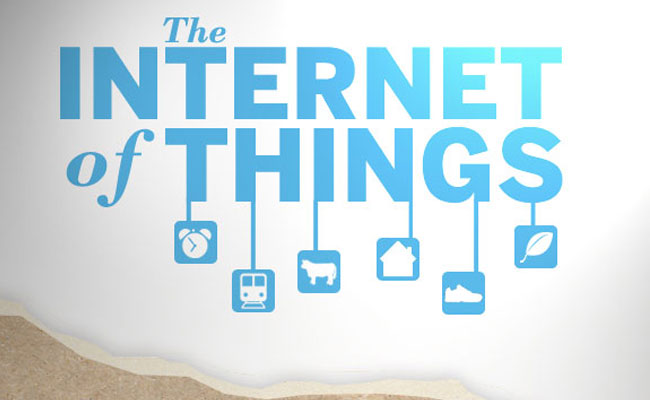
Ian Watterson, managing director Asia Pacific with CSG International, says there is little doubt that the Internet of Things (IoT) is forging ahead in its ability to transform the way we live our lives.
More convenient homes, more livable cities, easier transport solutions, industrial optimization and greater personal insight are all by-products of a system which uses data to transform the way we think about and interact in the world.
In 2003, there were 500 million Internet connected objects for 6.3 billion people. By 2020, there will be 50 billion objects for 7.78 billion people. The numbers tell the story of the impact of IoT on how we will function in the new world, but at whose cost? Who or what is funding and driving the sustainability of this technological revolution?
Communication service providers are in the box seat in the IoT. After all, the Things need to communicate and they need networks for that. But while CSPs are making significant investments in this new business area, they are also faced with the challenges of maximizing returns on that investment.
Arguably we are now entering the third phase of the IoT race. Yesterday it was providing technology: remote sensing, data gathering, status monitoring and developing interactivity and control. Today we are recognizing the value the IoT brings – to industries, governments, developers and the individual. How do we make revenue from the progress made to date?
For the CSP, monetization has two attributes – the economics of pricing and the mechanics of billing. What is the price point a consumer or business will pay for the value they derive – and how does that price point change in a competitive market place? Then, what systems and operations are required to manage IoT costs and to process the revenue streams for end users and partners alike? And taking it a step further, how do CSPs reconcile value and monetization equations between consumer and the industrial IoT?
Consumer ‘things’ are the “attention seekers” that drive excitement in the IoT space. However, in relative terms, consumers are accustomed to getting a lot for free, whereas the industrial side is underpinning the IoT, with profits and revenue arguably “easier” to derive.
Thinking about new dynamics in billing is key to the sustainability of IoT revenue streams. Billing systems have evolved from being service-address centric to service-centric to customer-centric. The IoT will drive billing models into the next evolution – to ecosystem-centricity. To manage the diversity of connected things and the volume and complexity of the third party relationships supporting them, a billing platform must operate across networks, services, devices, data and partnerships in a unified way. The IoT generates new dynamics in charging operations, billing process automation, customer management, provisioning and network management, and product lifecycle management.
To monetize IoT, CSPs will have to charge more – for more transactions, involving more parties, resulting in more complexity. While monetization has been a low priority in the first phase, it will be critical to assess and manage the value between parties in the IoT. The previously dominant billing methods of usage-based charging and subscription-based charging alone will be insufficient. The value of each individual network transaction will be nominal if not zero; and subscription billing on a recurring basis lacks the flexibility and sophistication needed to calculate and share value among many parties in the IoT.
CSPs also have to look at their evolving business models. The IoT brings a growing number of third parties into the CSP’s ecosystem and the nature of those B2B2x relationships spans resellers, distributors, enablers and service providers in other geographies or with different network technologies. At the same time, the definition of a ‘customer’ is changing and, in extreme cases, an entity can be both a partner and customer at the same time.
The IoT will continue to have a massive influence on consumer and enterprise business models and on human behavior patterns, supporting a move from owning to renting assets on the consumer side, and for business to move from selling products to offering services.
Nowhere in the world is this more evident than in India.
The Indian Government’s plan to develop 100 smart cities in the country, for which Rs 7,060 crore has been allocated in the current budget, could lead to a massive and quick expansion of IoT in the country. Also, the launch of the Digital India Program of the Government, which aims at ‘transforming India into a digital empowered society and knowledge economy’ will provide the required impetus for rapid development of the IoT industry.
The various initiatives proposed to be taken under the Smart City concept and the Digital India Program are designed to set up digital Infrastructure in the country and help boost the IoT industry to another level. The objective is to create an IoT industry in India of USD 15 billion by 2020. This will also lead to an increase in the connected devices from around 200 million to over 2.7 billion by 2020, according to the Indian Government’s Policy on IoT.
Smart parking, smart urban lighting, waste management, improved citizen safety and intelligent transport are just some of the aspirations of a progressive, smart new country.
The IoT is rapidly reaching the stage where monetization of use cases will become a top priority, if for nothing else, to demonstrate a return on the massive development investment that has been made. Furthermore, monetization enables the CSP at the center of the IoT to associate the correct value to the customer’s service and to share that return among all of the players in the ecosystem.
While as consumers we may remain enamored by the shiny new gadgets that make life easier and more interesting, it is the CSP who leads the IoT industry with solutions that manage charging, processes, customers, networks and lifecycles in an end-to-end fashion that will really drive the long-term sustainability of the technological brave new world.
Ian Watterson, managing director Asia Pacific with CSG International





